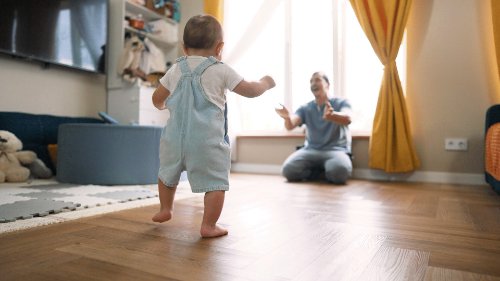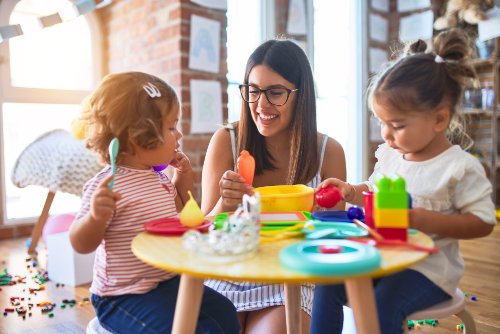School Readiness Tips December 2024
December 18, 2024
Help build children’s language by adding words and ideas to what they say. When you respond to what a child says by making their sentence more complete, or by adding a new idea, you model more advanced language that they can learn from. Here are some fun things to try.
Are You Concerned That Your Child Is a Late Talker?
December 10, 2024
Did you know that 15% of toddlers may be considered Late Talkers? Find out what it means to be a Late Talker, and get some tips to support your child’s language if you’re concerned.
Building Print Knowledge with This Book is on FIRE
November 28, 2024
Learning about print doesn’t come naturally to children. They need our support to understand what print is for and how it works – a key early literacy skill called print knowledge. Read on for some tips to build your child’s print knowledge with the fun children’s book, This Book Is on Fire!
From First Steps to First Words: How Walking Sets the Stage for Talking
November 27, 2024
Around the same time babies start walking, they also start talking. Is it just a coincidence? Nope! Find out how walking affects children’s communication development, and get some tips for interacting with your child during this important time in their life.
Comments vs Questions: Are You Striking the Right Balance for Your Child?
November 26, 2024
To make conversations last longer, it’s a good idea to swap out some of your questions for comments. Making comments that are based on your child’s interest is one of the best ways to encourage them to communicate. Here’s how to do it!
Coaching Parents to Identify How Their Child Starts Interactions
November 06, 2024
When does a child start an interaction? Learn how you can coach parents to narrow down the difference between their child’s actions and their child’s communication in an activity, so that the parent knows what to respond to.
School Readiness Tips November 2024
November 05, 2024
When children participate in interactions that go back-and-forth many times, they have more opportunities to hear and practice language. Children learn the most from talking about their ideas, so let the child take the first turn to start an interesting conversation. Then, follow the child’s lead to keep the interaction going! Here are some fun ways to build back-and-forth conversations.
What Do Early Childhood Educators Think About the Learning Language and Loving It™ Program?
October 22, 2024
Two new studies shed light on what helps educators get the most out of the Learning Language and Loving It™ Program, and what impact it has on their interactions with children.
Why Interaction Matters
October 23, 2024
Studies show that back-and-forth interactions between an adult and a child actually change a child’s brain and lead to better language outcomes. In this video, The Hanen Centre’s Executive Director, Elaine Weitzman, talks about what the research says about the power of high-quality interactions, and describes the critical ingredients that make these interactions possible. In Part 2 of this video, we show you the difference Hanen strategies can make to help your interactions with young children blossom into beautiful conversations – where the best language learning takes place!





